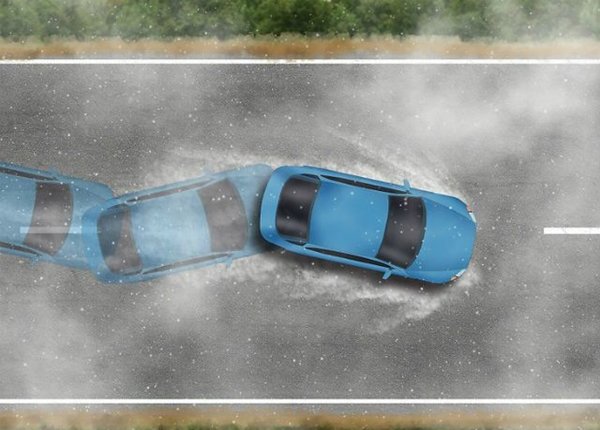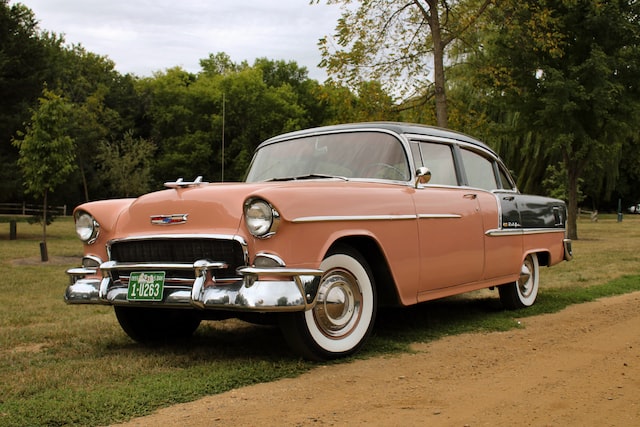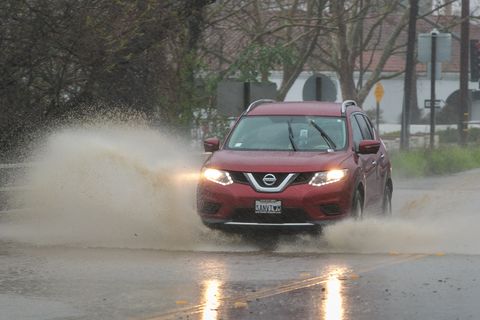Driving in rainy weather can result in a variety of concerns, such as reduced vision or the requirement for longer braking distances. Your car may also hydroplane as a result of it.
If you’ve ever driven on wet roads or across a puddle of standing water and felt like you didn’t have control of your vehicle, you’ve probably had this experience. It’s crucial to know what to do if a hydroplane in-car occurs because it can happen to anyone at any time.

What is Hydroplane in Car?
Hydroplaning also called “aquaplaning”, happens when your vehicle’s tires begin to ride on top of standing water rather than the road surface. Contrary to popular beliefs, hydroplaning can occur even when the roads are only somewhat damp. Hydroplaning is a very real hazard that drivers should aim to avoid at all costs, whether they are driving in heavy rain or on roads that are still wet from a storm that came through hours ago. Hydroplaning not only takes away a motorist’s ability to manage their vehicle, but it also leaves them feeling powerless, which may be unnerving for even the most experienced driver.
At what speed does hydroplaning occur?
Hydroplaning can happen on any wet road surface, but it’s more dangerous in the first 10 minutes of light rain.
Light rain combined with oil residue on the road creates slick conditions that can cause vehicles to hydroplane, especially at speeds over 35 mph. For the driver and other motorists, this can be a deadly combination.
When the weather is bad, such as fog, rain, ice, or snow, the chances of being involved in a car accident increase. The most dangerous conditions are frequently slick conditions that drivers aren’t prepared for, rather than heavy downpours and blinding snow.
Read more >> Proper Hand Positions On Steering Wheel
What To Do When Hydroplaning?
- Step 1: Remove your foot off the accelerator as soon as possible. When dealing with hydroplaning, never use your brakes. On a wet road, sudden braking might force your car to skid entirely out of control.
- Step 2:Turn your steering wheel in the direction your car is hydroplaning, even if it seems contradictory. This will assist you in regaining steering control by allowing your tires to realign with the direction your car is traveling.
- Step 3: Wait for the tires to reconnect with the road surface. When the car has driven out of the hydroplaning situation, the driver will be able to determine.
- Step 4: After successfully recovering from hydroplaning on a wet road, you may need to pull over and rest for a few minutes to recover and calm down.
How to Avoid Hydroplaning?
- Reduce your speed
Hydroplaning is most likely to occur at speeds greater than 35 miles per hour, according to most vehicle safety experts. Slow down significantly as soon as the first drops hit your windshield. In heavy rain or windy circumstances, it is advised to drive five to ten miles slower than the posted speed limit. Sudden increases in speed, such as those necessary to pass, increase the risk of hydroplaning. At all costs, avoid rapid accelerations.
- Rotate and balance your tires properly and on a regular basis
Maintaining the condition of your tires can also assist you to avoid hydroplaning on rainy roads. Every other time you have your oil changed, around every seven to ten thousand miles, you should have your vehicle’s tires rotated and balanced.
- Choose high-quality tires with anti-hydroplaning features
This is especially crucial for drivers who live in regions where there is a lot of rain. Tires should be replaced on a regular basis. On rainy roads, driving on slippery or bald tires can be dangerous.
- No cruising in the rain
When it’s raining or you’re driving on wet roads, never utilize your vehicle’s cruise control. If you hydroplane while driving with cruise control engaged, it will take longer to disable the feature and restore control of your car.
- Stay away from puddles and standing water
Avoid any area of the road where you can see the water has collected. Hydroplaning can be caused by a thin film of water. It’s quite likely that your car will hydroplane when it travels over standing water if you can see it.
To keep their vehicle from hydroplaning, every driver needs to take extra precautions. If you see a hydroplane in car, use the safety recommendations listed above to swiftly regain control. Hydroplaning can be avoided by traveling at appropriate speeds for the road and tire tread. Maintaining proper tire pressure is also critical, as is ensuring that your windshield wipers are in good working order. If you must go off-road in bad weather, take it slowly and be mindful of any puddles on the ground when driving through water or snow.
If you want to get more information about the rules of the road, visit our website and take our free DMV practice test to grasp all the necessary knowledge to be safe on the road. Let’s check it now!

UT Utah License Renewal: A 2025 Comprehensive Guide
Discover the ultimate guide to Utah license renewal! This comprehensive guide delves into the intricacies of renewing your driver's license in Utah,...
February 13, 2023

South Carolina S.C. Driver's License Renewal
The South Carolina S.C. driver's license renewal process is designed to be comprehensive, taking into consideration eligibility requirements, renewal methods,...
February 13, 2023

Pennsylvania PA DMV License Renewal: A 2025 Full Guide
The Pennsylvania PA DMV license renewal process is designed to be comprehensive, taking into consideration eligibility requirements, renewal methods,...
February 10, 2023

